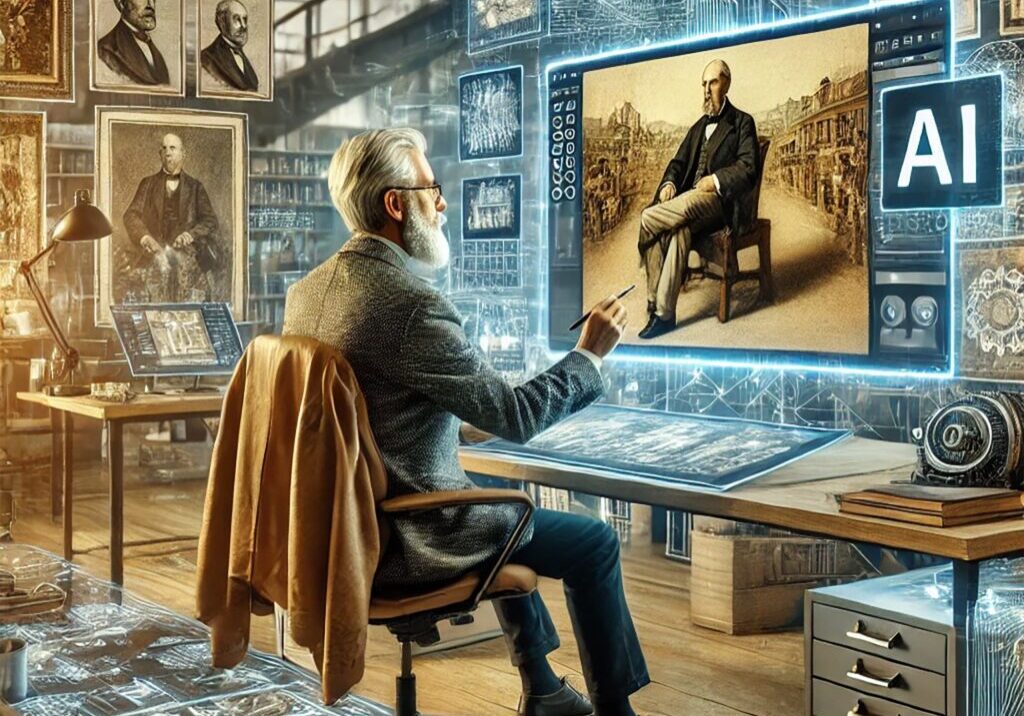
The Continental Army: From Farmers to Fighters
Introduction
When war arrived, the colonies had no army- just groups of local men who owned rifles and knew their fields better than their formations. There were no uniforms, no ranks, no salaries. Just urgency, and the understanding that if they didn’t stand together, they would fall alone. The Continental Army was not formed out of strength. It was formed out of need. In June 1775, weeks after the fighting at Lexington and Concord, the Second Continental Congress voted to create a unified colonial force.
They named George Washington its commander. And with that vote, a collection of farmers, blacksmiths, tradesmen, and volunteers began the difficult work of becoming something more than a militia. They began becoming an army. The Army in the Mural In the 250th Anniversary Mural, the Continental Army appears not in glory, but in gathering. Figures in mismatched clothing form into lines. Washington stands not on a horse, but on the ground- among them, part of them. There is no fanfare. Just movement. Just formation. This is not a depiction of victory. It is a portrait of effort.
The mural captures the moment when direction overtook instinct- when defense became coordination, and courage became structure. Why It Was Formed After the battles in Massachusetts, Congress understood that the war was no longer local. The colonies needed a force that could act as one- crossing borders, receiving supplies, and representing a unified front. The Continental Army was that answer. But it was not created from scratch. Congress adopted the New England militia already assembled outside Boston and expanded from there.
They gave Washington the command not only for his military experience, but for symbolic reasons. He was from Virginia. His leadership signaled that this was not just a Massachusetts war- it was a continental one. Who Served The men who filled the ranks were not professional soldiers. Most had never marched in formation or fired in combat. They were farmers, apprentices, teachers, and artisans. Some served for short terms. Others reenlisted for years. Many came barefoot. Many left without pay.
They came from different colonies, different cultures, and different understandings of what they were fighting for. Uniting them required more than leadership. It required patience, improvisation, and constant renewal of purpose. The Struggles Within The Continental Army faced shortages of nearly everything- food, tents, shoes, ammunition. Training varied widely. Disease spread quickly. Morale rose and fell with the seasons.
At times, Congress could not pay them. At other times, troops deserted. It took years before the army resembled a formal force. Even at its best, it often lacked the resources its British opponents could count on. But it had something else: belief. Not always steady, not always shared, but always recoverable. And when belief faltered, Washington’s presence held the line. How It Changed the War The Continental Army did not win every battle. It lost many. But it stayed intact. Its greatest victory was its endurance. From Bunker Hill to Yorktown, it absorbed loss and learned from it. It trained, adapted, and evolved. With French support, with new strategies, and with its own hard-earned discipline, the army became more than a placeholder. It became the spine of the Revolution. The militias defended homes. The Continental Army defended the idea of a nation.
Why It Still Matters
The story of the Continental Army is not one of instant heroism. It is one of slow transformation- of ordinary people asked to do something extraordinary, and staying long enough to learn how. In that story is a lesson: that movements are not made by readiness. They are made by response. And sometimes, the power of an army is not measured by how many battles it wins, but by how long it’s willing to keep standing when it isn’t sure it can.
Further Reading / Explore More
The mural places the formation of the Continental Army in quiet contrast to louder scenes of protest. It reminds viewers that rebellion requires follow-through. That ideas, once declared, must be carried- often by people who never sought the burden, but took it anyway.
Related Blog: John Hancock’s Other Declaration: The Causes and Necessity of Taking Up Arms Mural Link: https://usa250thanniversarymural.com Tags: Continental Army, George Washington, Revolutionary War, Militia to Army, Colonial Military, Second Continental Congress, 250 Mural, Early American Soldiers, Revolutionary Strategy, American Army Origins

